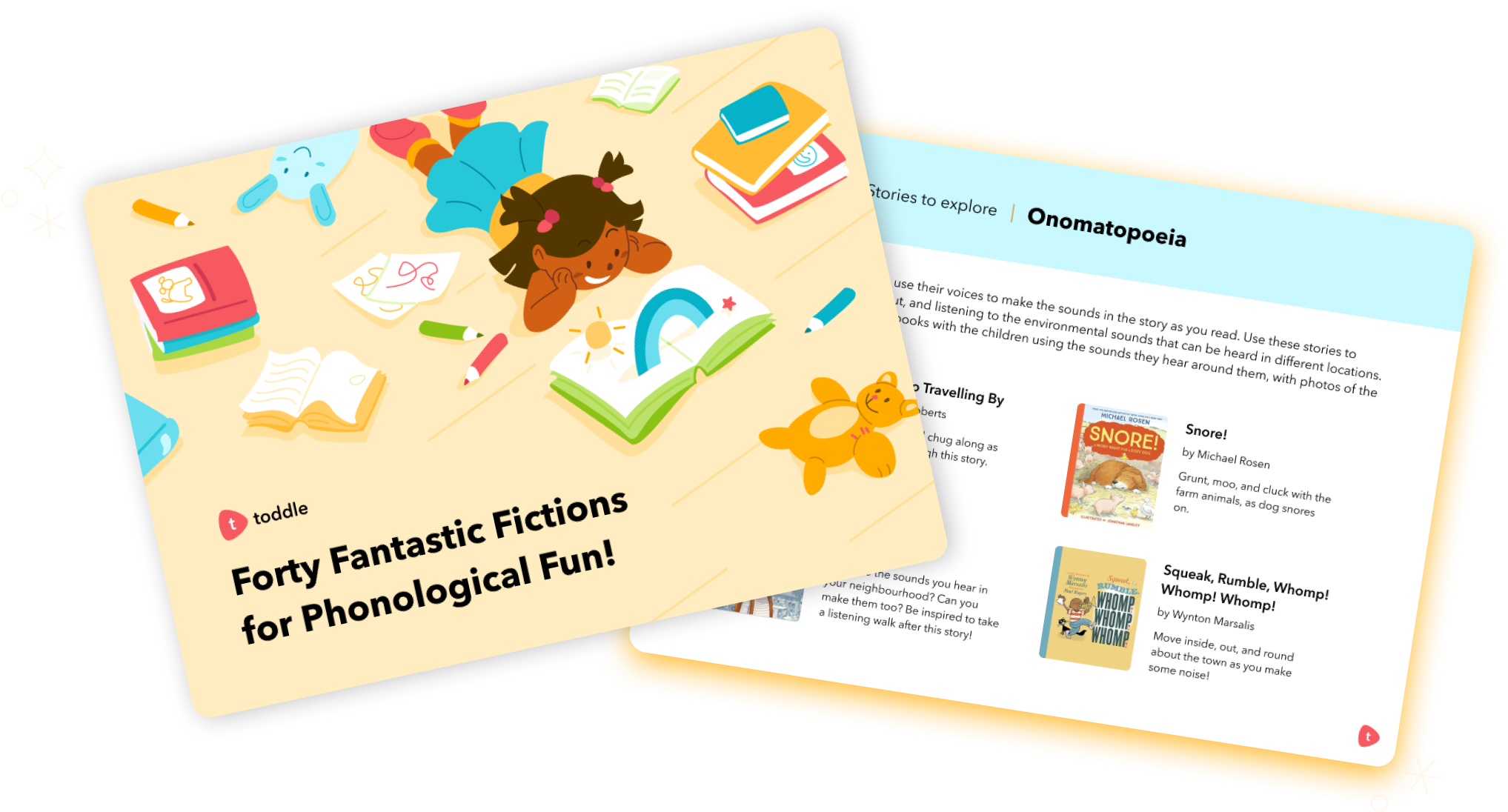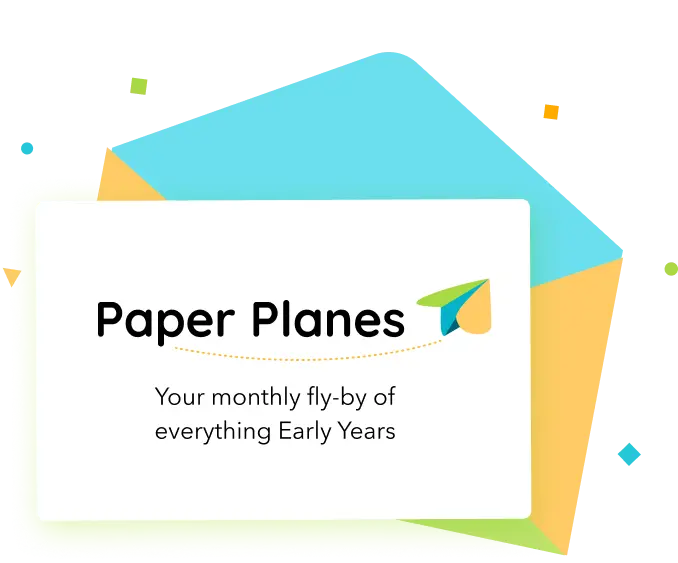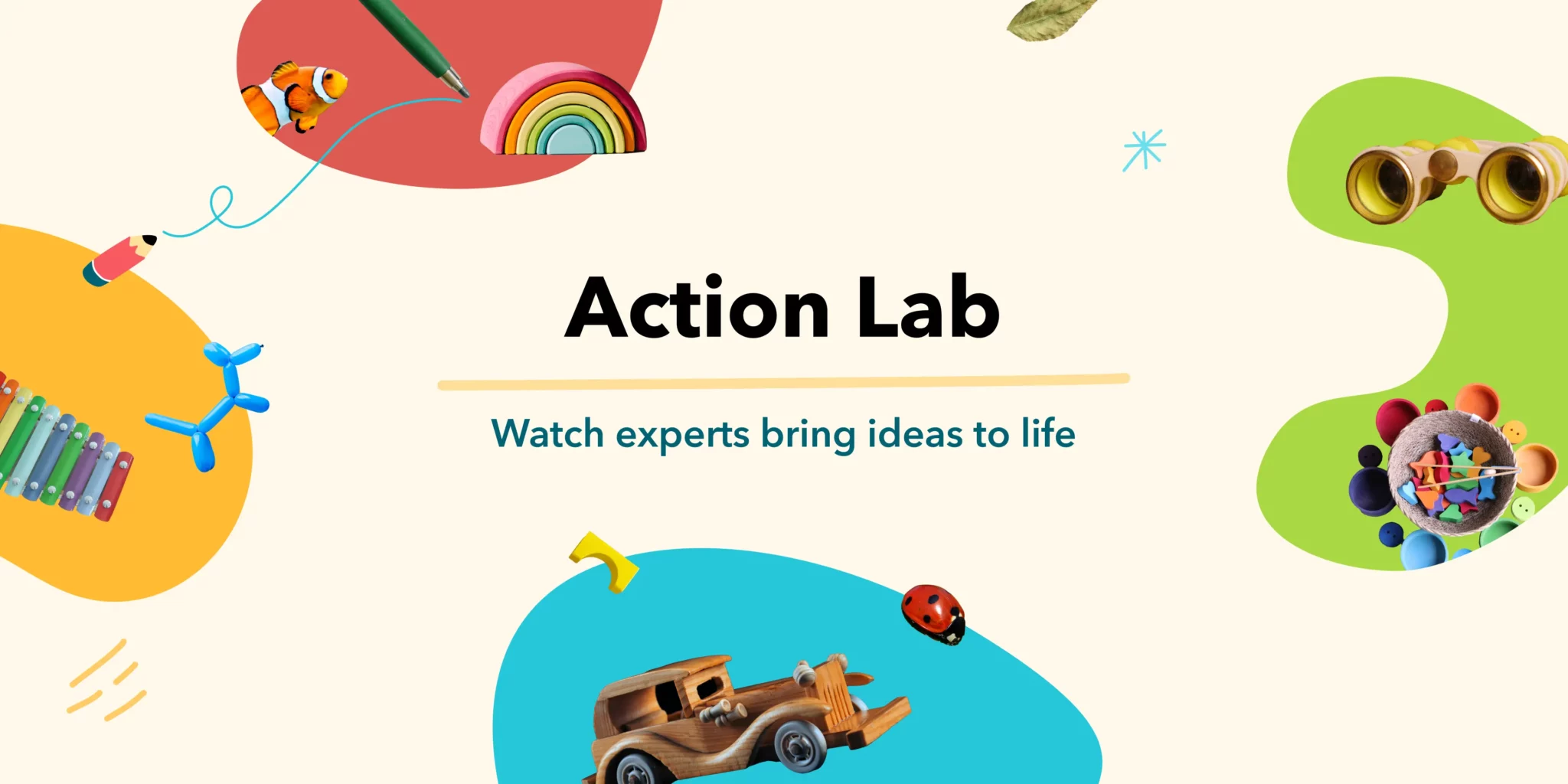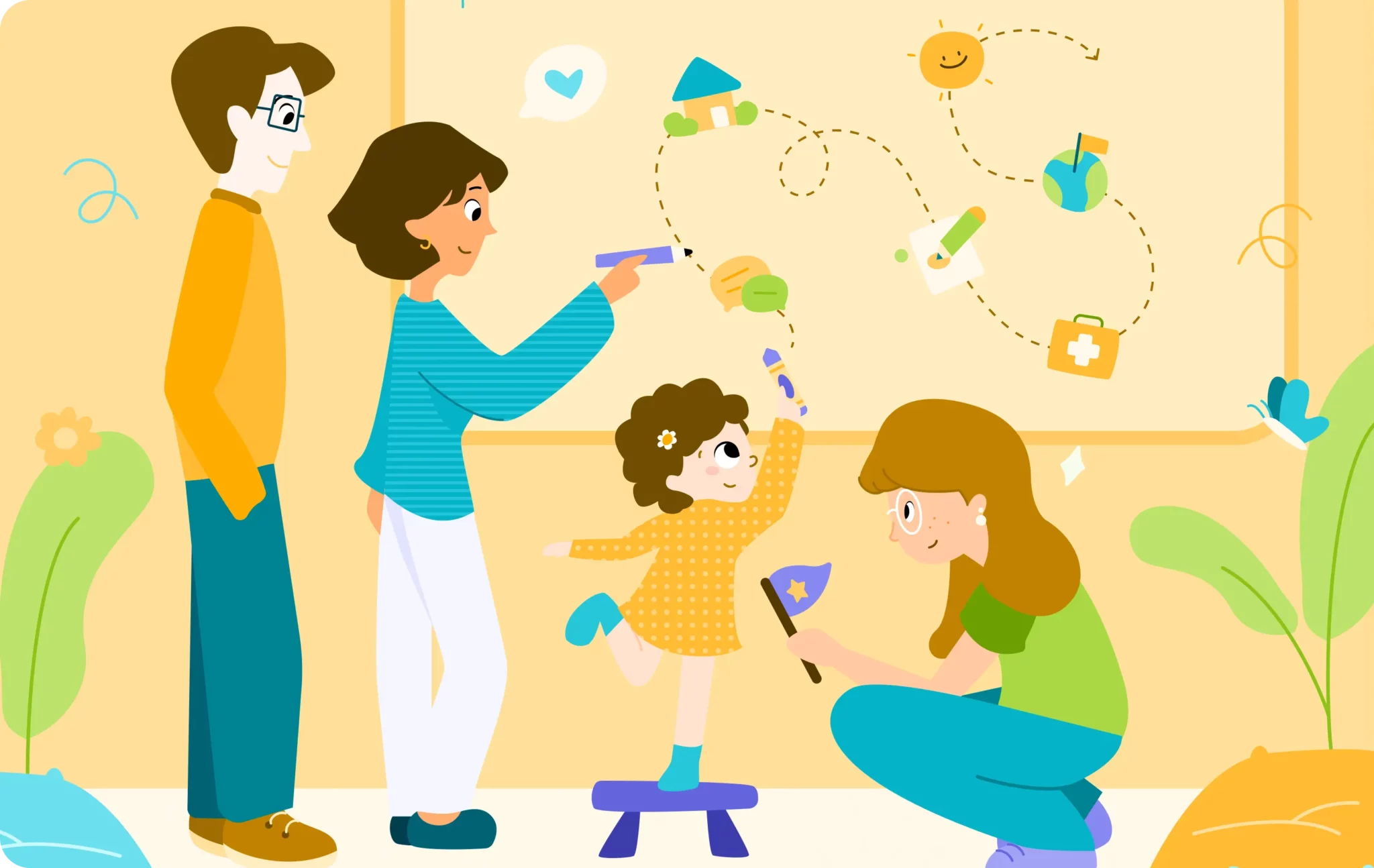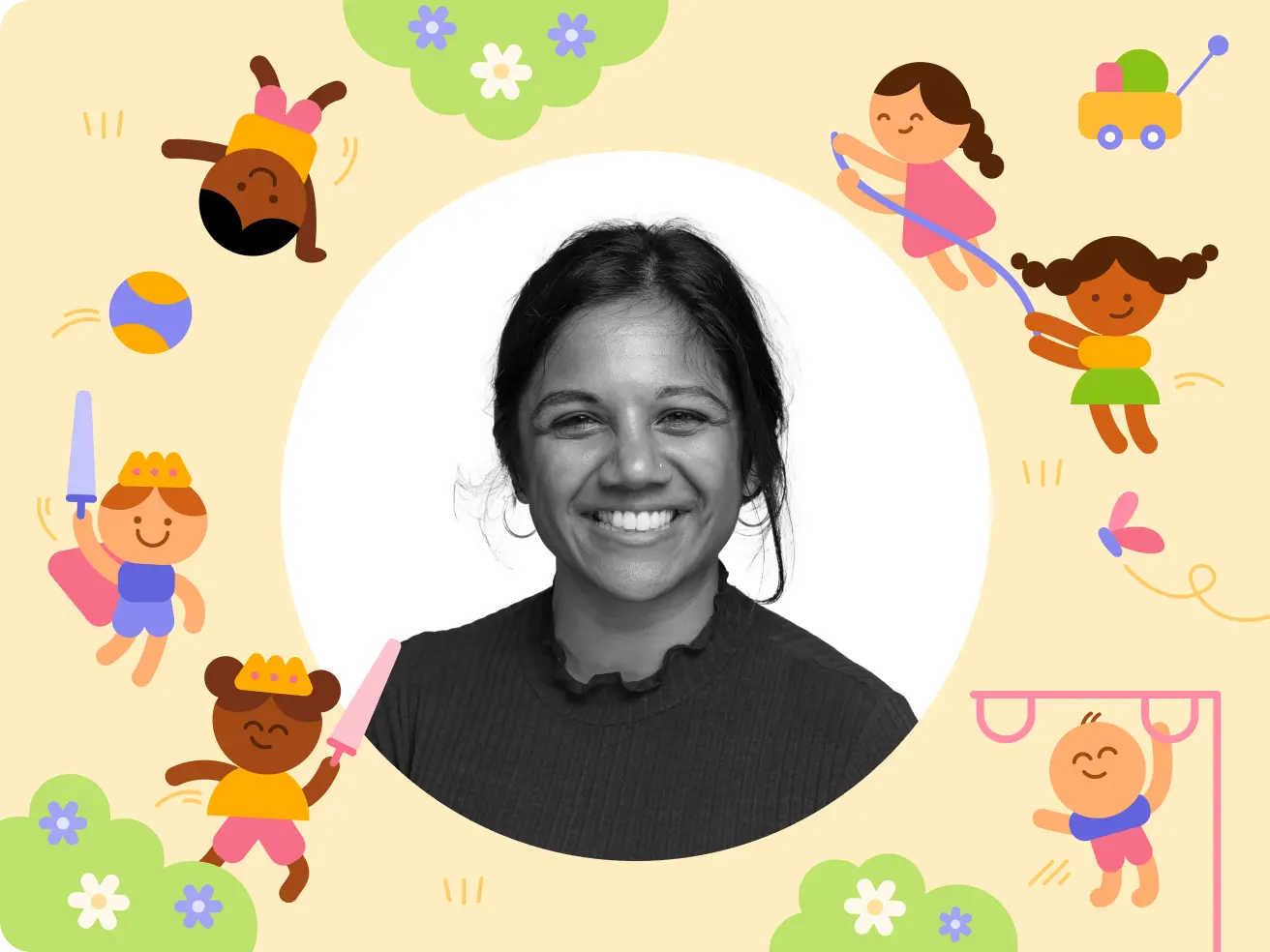Phonological awareness – the awareness of all the sounds of a language and the ability to hear and distinguish these sounds – is the building block for aspiring readers.
What does phonological awareness look like in the early years?
- Recognising and distinguishing between environmental sounds, for example, a dog barking and a telephone ringing
- Identifying the initial sound of a word (m-ummy, c-ake)
- Clapping out 1, 2, then 3 syllable words (car, cooker, computer)
- Matching rhyming words orally (hat, cat, mat)
- Segmenting CVC words orally (zip – z/i/p)
- Blending sounds to make words orally (c/u/p – cup)
Stories can provide a context for children to practice recognising and manipulating the sounds of language in a fun and engaging way.
How can stories be used to develop phonological awareness?
- Rhyme time: Read rhyming books with children and encourage them to identify words that rhyme. You can also create your own silly rhymes with children, asking them to come up with words that rhyme with different sounds.
- Sound hunt: Choose a particular sound and ask children to listen for it as you read a story. For example, if you choose the “s” sound, ask children to listen for words that begin with “s” or have an “s” sound in the middle or at the end of the word.
- Alliteration antics: Start with the child’s name. How many objects can they find with the same initial sound? What action or describing words can they add to make funny phrases that are alliterations? Sara, socks, silly, stripy can quite easily become Sara’s stripy socks are silly! Generate some nonsense alliterations in a fun way!
- Phoneme swap: Choose a word in the story and ask children to change one sound to make a new word. For example, if the word is “cat,” ask children to change the “c” to a “h” to make “hat.”
- Syllable clapping: Ask children to clap or stomp for each syllable in a word or phrase as you read it. For example, if you read the phrase “once upon a time,” children would clap four times – once for each syllable in “once”, “up-on”, “a”, and “time”.
By incorporating these types of aural activities into story time, you can help children develop their phonological awareness in a fun and engaging way. This can help set them on the path to becoming confident and capable readers.
Use this booklist to:
- Identify texts that build phonological awareness
- Make reading times playful and fun
- Explore children to specific auditory experiences though read alouds

